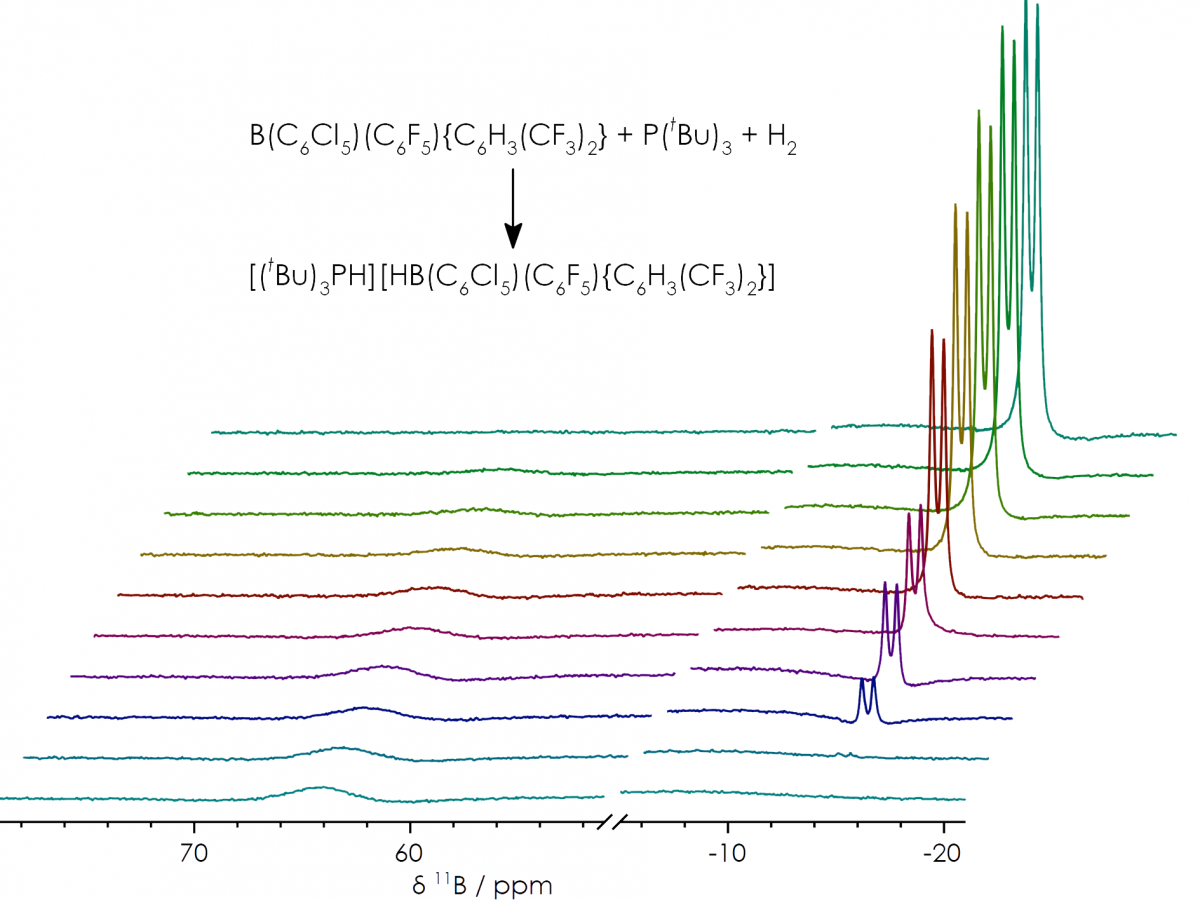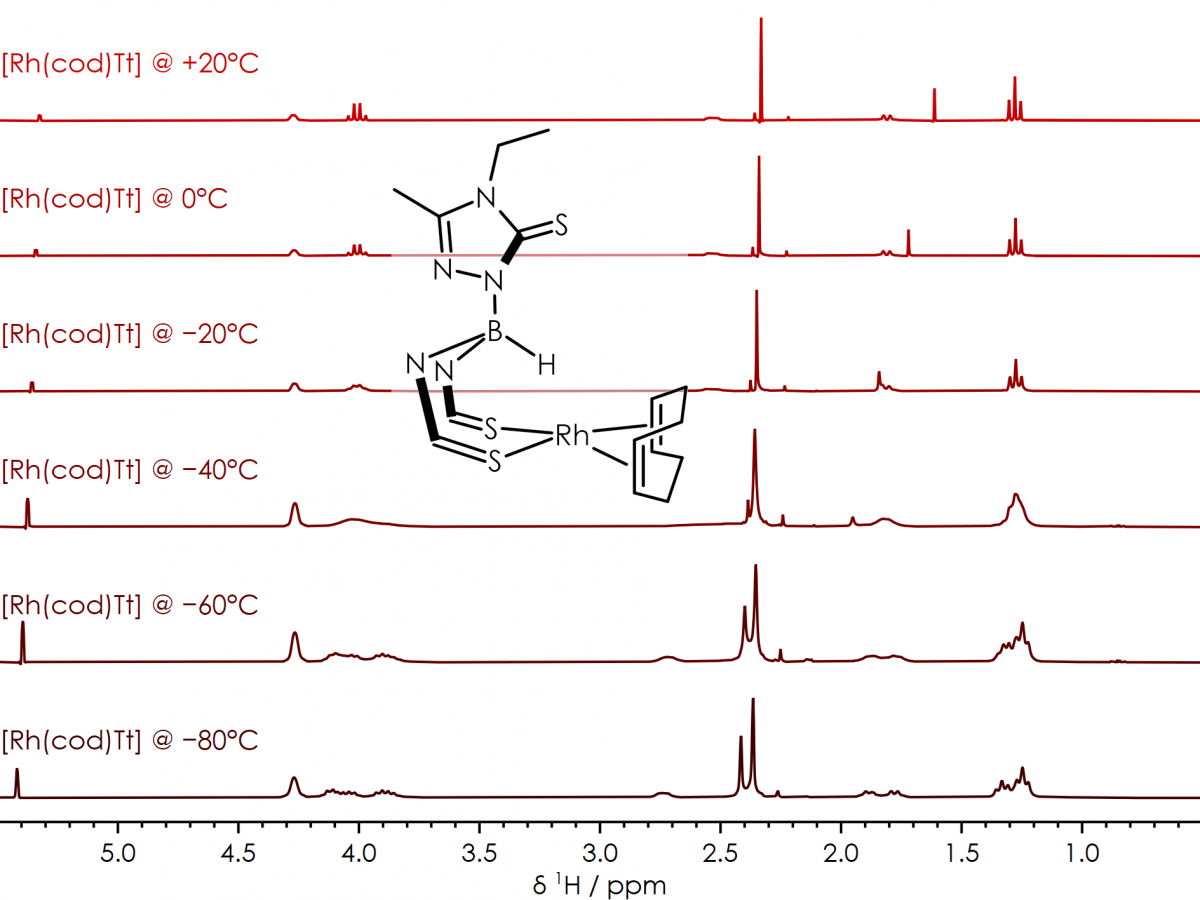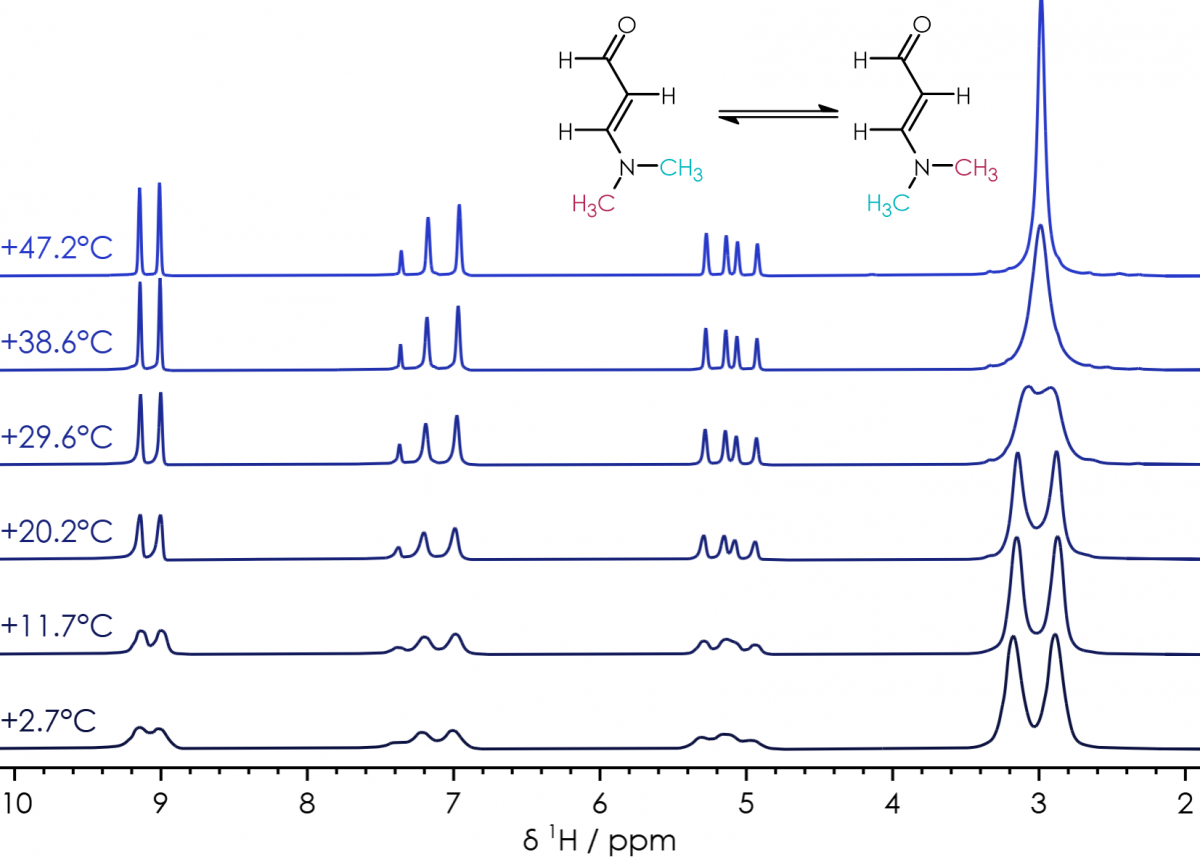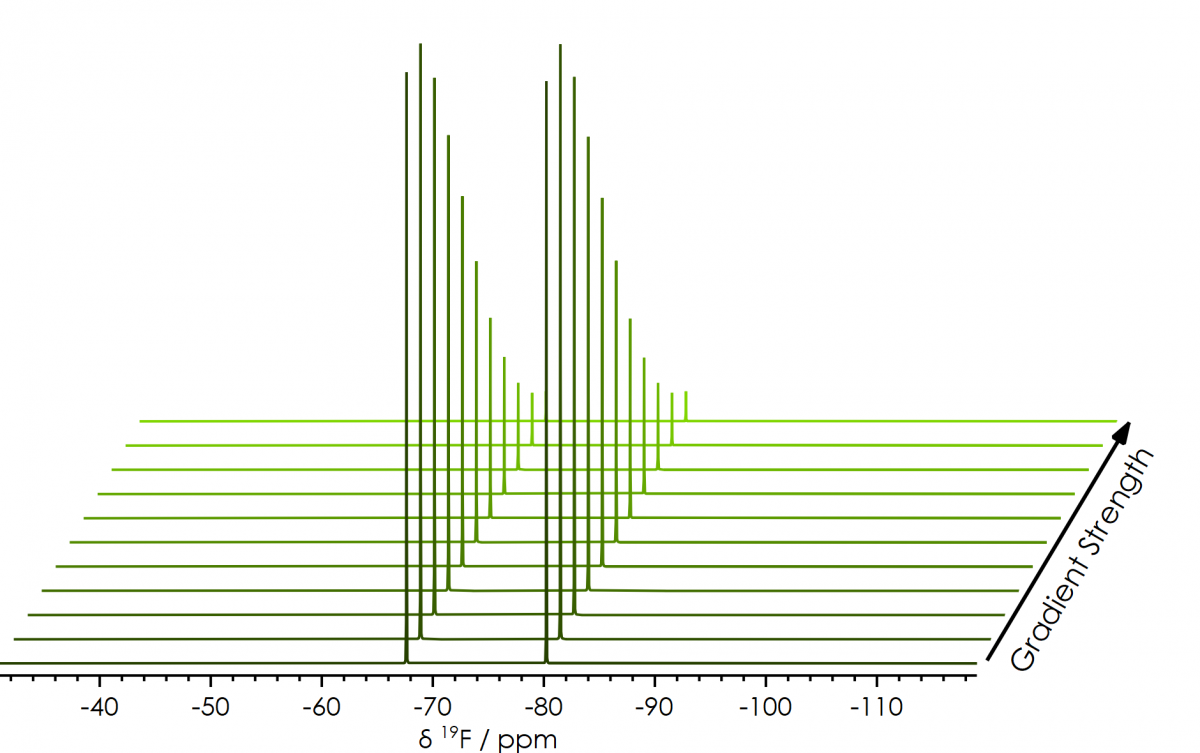Products
Applications
Learning
28th April 2023 | Author: Robin Blagg
In the previous part, I discussed the measurements I had previously performed on high-field NMR spectrometers while undertaking postgraduate and postdoctoral research, and how I could (or could not) have made use of benchtop NMR spectroscopy for the same applications.
In this part I look beyond simple structural elucidations to some of the more advanced applications of NMR spectroscopy, demonstrating how much work I had previously performed on high-field systems could be performed on our X-Pulse Broadband Benchtop NMR Spectrometer.
I used NMR spectroscopy for more than just to characterise pure compounds and mixtures, such as for monitoring chemical reactions. In general these have been in situ reactions where all the reagents are in the same (sealed) NMR tube, and the resulting chemical reaction monitored over a period of hours (or days). One such example which I worked on while at the University of East Anglia; was the heterolytic cleavage of H2 using a frustrated Lewis pair (FLP). These reactions could readily be monitored by 11B NMR spectroscopy (figure 4), where both tri(aryl)borate starting material (very broad signal around δB +64 ppm), and the tri(aryl)borohydride product (at around δB −16 ppm doublet, 1JBH ~80 Hz), could be clearly observed.

Figure 4 11B NMR spectra for reaction monitoring of the FLP cleavage of H2, acquired on a 500 MHz instrument [RSC Adv., 2016, 6, 42421-42427]
It is for these reaction monitoring studies, where having access to an X-Pulse would have been particularly useful. These studies discussed above were performed on a communal open access NMR spectrometer, a common set-up in many academic high-field NMR facilities, therefore in order to obtain spectra at fixed time intervals (usually around every hour for these reactions) there were two options, each with their own problems. Either booking out the instrument for days at a time to run these measurements (causing a significant negative impact to other users); or using automated queuing to fit in these measurements around peoples samples (resulting in irregular periods between acquisitions). These problems could have been overcome with an X-Pulse, which could be used to monitor the reaction for as long as necessary without inconveniencing other staff and students. In fact, if I’d had access to an X-Pulse at the time, I’m sure I’d have been able to perform more reaction monitoring studies than I was able to do otherwise.
Another area which I’ve studied using NMR were dynamic processes in solution, which took place in many of the compounds I synthesised during my doctoral studies at the University of Bristol. These rhodium complexes incorporated a three-fold symmetric tridentate ligand, hydrotris(thioxotriazole)borate, which once bound to the metal centre will formally have chemically distinct ‘arms’ of the ligand, depending on if it’s bound to the rhodium centre or not; however at room temperature the bound and free ‘arms’ of the ligand interchange so rapidly that they are equivalent in the 1H NMR spectrum (Figure 5). However upon cooling, the interchange is slowed and distinct signals are resolved in the spectrum. This is clearest for the singlet methyl signal(s) around δH +2.4 ppm, at room temperature only a single signal is observed, once cooled the separates into two peaks in a 3:6 ratio, corresponding to the free and bound ‘arms’ of the ligand. On close inspection this can also be observed for the ethyl signals from the ligand, along with the methylene groups of the cyclooctadiene.

Figure 5 Variable temperature NMR Spectra of [Rh(cod)Tt], acquired at 300 MHz [Dalton Trans., 2009, 8724-8736]
While these type of measurements can be performed on the X-Pulse, these specific examples couldn’t be, since the temperature range required to observed these fluxional processes were between +30°C and −90°C; and the temperature range attainable by the X-Pulse, in its variable temperature configuration is +65°C to 0°C.
For an example of a comparable series of measurements performed on the X-Pulse; proton NMR spectra were obtained of a solution of 3-dimethylaminoacrolein over a temperature range of +2 to +48°C (Figure 6). At low temperatures, due to conjugation along the OCCCN chain, rotation about the N–C bond is sufficiently slow that the protons of the two methyl groups give distinct signals in the NMR spectrum. While as the temperature increases, the rate of rotation increases, and the two signals coalesce, eventually giving a single peak.

Figure 6 1H NMR spectra of 3-dimethylaminoacrolein in CDCl3, between +2 to +48°C, acquired on the X-Pulse
Often the reason why I was synthesising many of these compounds, was in the hope of subsequently observing (and hence modelling) interesting electrochemistry. To accurately model electrochemical processes requires knowledge of various physical parameters associated with the species of interest. One of which is the diffusion constant, which can be directly measured by NMR spectroscopy, if the spectrometer is fitted with gradients; which are available as standard on the X-Pulse and most high-field systems. Diffusion constants are measured using a series of one-dimensional pulsed-field gradient spin-echo (PGSE) spectra, or a two-dimensional diffusion ordered spectroscopy (DOSY) spectrum. Depending on the compounds of interest, I could have measured diffusion constants using 1H or 19F NMR (or both). These measurements could have been performed on the X-Pulse, for example the series of PGSE spectra shown in figure 7, which could be used to calculate the diffusion constant of the hexafluorophosphate anion in that solution.

Figure 7 19F PGSE NMR spectra of [PF6]–, acquired on the X-Pulse
Robin Blagg,
Applications Scientist, Oxford Instruments
Robin Blagg is the applications team leader at Oxford Instruments Magnetic Resonance. Robin completed his first degree at the University of York, then obtained his PhD in organometallic chemistry at the University of Bristol, and then undertook post-doctoral research at the Universities of Sussex, Manchester, and East Anglia; before joining Oxford Instruments in October 2020. Robin is a member of the Royal Society of Chemistry (RSC), and serves on the committee of the RSC NMR Discussion Group.